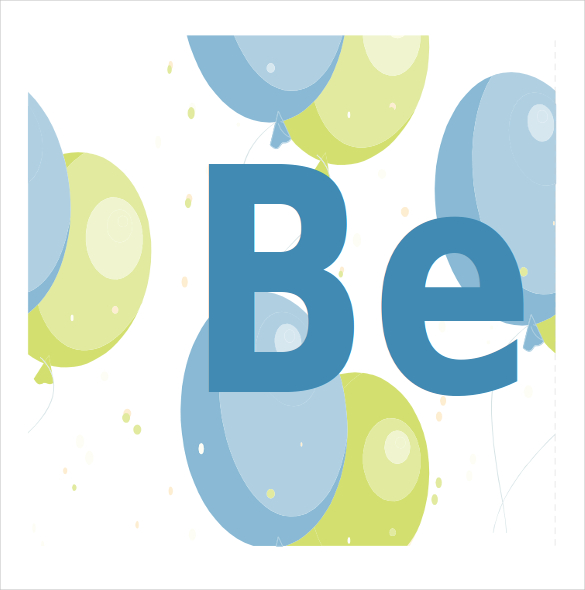In today's visually driven world, a compelling banner can be the difference between capturing attention and blending into the background. For many small businesses, non-profits, or individuals on a budget, dedicated graphic design software might be out of reach or too complex. Fortunately, a powerful and accessible tool often sits right on their desktop: Microsoft Word. Learning to leverage a Banner Template Word 2010 provides an incredibly efficient and cost-effective way to create professional-looking visual communications without needing extensive design expertise or expensive subscriptions.

Microsoft Word 2010, despite being an older version, remains a highly capable platform for a surprising array of design tasks. Its familiarity, widespread availability, and robust set of features, including text formatting, image insertion, shape tools, and layout options, make it an ideal starting point for DIY design projects. This accessibility means virtually anyone with a computer can begin crafting impactful banners for various purposes, from promoting an event to announcing a sale.

The beauty of starting with a template lies in the foundational structure it provides. Instead of staring at a blank page, users can build upon a pre-designed layout, saving considerable time and effort. This approach not only streamlines the design process but also ensures a certain level of professionalism from the outset, allowing creators to focus on the message and brand elements rather than struggling with basic layout.
This guide will delve into how you can effectively utilize Word 2010 to design stunning banners. We'll explore the best practices for finding, customizing, and creating your own templates, ensuring your visual messaging stands out. From understanding layout principles to fine-tuning your design for impact, you'll discover that a sophisticated look is entirely achievable with the tools you already possess.

Whether you're looking to create a physical banner for a local fair, a header for an online newsletter, or a promotional graphic for social media, mastering the art of banner creation in Word 2010 offers a versatile and practical solution. It empowers you to maintain brand consistency, convey information clearly, and ultimately, boost your brand's visibility with designs that resonate with your target audience.

The Enduring Value of Word 2010 for Banner Design

While newer versions of Word and dedicated design software offer advanced features, Microsoft Word 2010 continues to be a surprisingly robust and user-friendly platform for banner creation. Its widespread availability and the fact that many individuals and organizations still use it make it an accessible choice. The interface, though older, is familiar to millions, meaning the learning curve for basic design tasks is significantly reduced. This familiarity allows users to focus on their creative vision rather than getting bogged down in complex software mechanics.

One of the primary advantages of using Word 2010 is its cost-effectiveness. If you already have the software installed, there are no additional expenses for design tools. This is a huge benefit for startups, small businesses, or community groups operating on tight budgets. Furthermore, Word's inherent capabilities for text manipulation, shape creation, and image integration are more than sufficient for designing most standard banners. Users can easily control fonts, colors, sizes, and alignments, which are the fundamental building blocks of any effective visual communication.

Word 2010 also excels in its printing capabilities. Once your banner is designed, it can be easily saved in various formats, including PDF, which is ideal for sending to professional printers. For smaller, in-house banners, the direct print function works flawlessly, allowing for quick production of materials. The ability to create a professional-looking banner from a familiar office application truly democratizes design, putting powerful visual communication tools into the hands of a broader audience.

Locating and Customizing a Banner Template Word 2010
The first step in creating an eye-catching banner is often finding a suitable starting point. While Word 2010 might not have a vast built-in library specifically labeled "banners," you can easily adapt other templates or find numerous free resources online. Looking for a Banner Template Word 2010 can involve a few avenues, each offering unique benefits.

Utilizing Microsoft Office Online Templates
Although Word 2010's direct template gallery might be limited, Microsoft's online template repository is an excellent resource. You can often find templates designed for flyers, posters, or certificates that can be easily repurposed as banners. These templates are typically designed to be fully editable within Word, allowing you to change text, images, and color schemes without compatibility issues. Search terms like "flyer template Word," "poster template Word," or "sign template Word" can yield promising results that serve as a solid foundation.
/logistics-and-transportation-of-container-cargo-ship-and-cargo-plane-with-working-crane-bridge-in-shipyard-at-sunrise--logistic-import-export-and-transport-industry-background-968819844-ec6fffc731ca465dac35a3e46f568a60.jpg)
Exploring Third-Party Template Websites
The internet is brimming with websites offering free and premium Word templates. A quick search for "free banner template Word 2010" or "printable banner Word template" will reveal a plethora of options. When downloading from third-party sites, always ensure they are reputable to avoid malware. These templates often come in .docx or .dotx formats, which are fully compatible with Word 2010, though they might require slight adjustments if they were originally designed in a newer version.

Customizing Your Chosen Template
Once you have a template, the real fun begins: customization.
1. Text Modification: Click on any text box to edit the content. Replace placeholder text with your specific message, event details, or call to action. Experiment with different fonts (ensuring readability), sizes, and colors that align with your brand identity.
2. Image and Logo Integration: Right-click on placeholder images to change them to your own. You can insert your company logo, relevant product images, or event-specific graphics. Ensure your images are of high resolution to avoid pixelation, especially for printed banners.
3. Color Scheme Adjustment: Most templates use pre-defined color palettes. You can change the fill color of shapes, text color, and background colors to match your brand guidelines. Use the "Format" tab that appears when a shape or text box is selected to access these options.
4. Layout and Sizing: Adjust the overall dimensions of your banner if necessary. Go to "Page Layout" > "Size" to choose standard paper sizes or "More Paper Sizes" for custom dimensions. Remember to maintain proportions to avoid distorting elements.

Step-by-Step Guide to Creating a Custom Banner in Word 2010
Even without a pre-existing Banner Template Word 2010, you can build a banner from scratch using Word's powerful design tools. This method gives you complete creative control and ensures your banner is exactly as you envision it.

Setting Up Your Canvas
- New Document: Open a new blank document in Word 2010.
- Page Orientation and Margins: Go to the "Page Layout" tab. Choose "Orientation" > "Landscape" for most banners. Then, click "Margins" > "Custom Margins..." and set all margins to 0 inches. This maximizes your usable design area.
- Custom Page Size: For a custom banner size (e.g., 24x36 inches for a large poster or a smaller web banner), go to "Page Layout" > "Size" > "More Paper Sizes...". Enter your desired width and height. Be mindful of printer limitations if you plan to print in-house; for very large banners, you'll likely need to send the PDF to a professional printer.
Adding Core Elements
- Background Color or Image: To add a background color, go to "Page Layout" > "Page Color" and choose a shade. For a background image, go to "Insert" > "Picture" and select your image. Send the image "Behind Text" using the "Text Wrapping" options in the "Format" tab (after selecting the image). Stretch it to fill the page.
- Text Boxes for Your Message: Banners are all about clear, concise messaging. Go to "Insert" > "Text Box" and choose "Draw Text Box." Draw your box, type your headline, subheadings, and any crucial information. Format the text (font, size, color, bolding) to ensure readability from a distance. Use contrasting colors between text and background.
- Shapes for Visual Impact: "Insert" > "Shapes" offers a variety of rectangles, circles, arrows, and more. Use these to create visual dividers, highlight important text, or add decorative elements. Right-click on a shape to access "Format Shape" for fill color, line color, and transparency options.
- Inserting Images and Logos: Use "Insert" > "Picture" to add your brand logo, product photos, or relevant graphics. Resize images carefully to maintain quality. Use the "Text Wrapping" options (e.g., "In Front of Text," "Tight," "Square") to position images precisely relative to your text and shapes.
Refining Your Layout
- Alignment and Distribution: Select multiple elements (hold
Ctrland click) and use the "Align" tools in the "Format" tab to evenly space and align objects. This ensures a professional and balanced look. - Grouping Elements: Once satisfied with the arrangement of a set of elements (e.g., a logo, a text box, and a shape), select them all and right-click, then choose "Group." This allows you to move and resize them as a single unit, preserving your layout.
- Visual Hierarchy: Use varying font sizes, bolding, and color contrasts to guide the viewer's eye. The most important information (e.g., headline, call to action) should be the most prominent.
Design Principles for an Effective Word 2010 Banner
Creating a banner in Word 2010 isn't just about placing elements; it's about thoughtful design that communicates effectively. Adhering to fundamental design principles will ensure your banner is not only aesthetically pleasing but also achieves its intended purpose.

Clarity and Readability
The primary goal of any banner is to convey information quickly.
* Font Choice: Stick to clear, legible fonts. Sans-serif fonts like Arial, Calibri, or Helvetica are excellent for headlines and body text on banners as they are easy to read from a distance. Avoid overly decorative or script fonts for primary messaging.
* Font Size: Ensure your text is large enough to be read from its intended viewing distance. A good rule of thumb is that key messages should be readable from several feet away.
* Contrast: Use strong contrast between text color and background color. Light text on a dark background or vice-versa works best. Avoid low-contrast combinations that make text blend in.
* Conciseness: Banners are not for paragraphs. Use short, impactful phrases and bullet points. Get straight to the point.

Branding and Consistency
Your banner is an extension of your brand.
* Logo Placement: Your logo should be clearly visible but not overpower the main message. Place it strategically, often in a corner or at the bottom.
* Brand Colors: Incorporate your brand's official colors consistently. This reinforces brand recognition and creates a professional appearance.
* Style Guide: If you have one, follow your brand's style guide for fonts, imagery, and tone. Consistency across all marketing materials builds trust and recognition.

Visual Hierarchy and Layout
Guide the viewer's eye through your banner logically.
* Dominant Element: Identify the most important piece of information or image and make it the focal point. This could be a headline, a product, or an event date.
* Z-Pattern or F-Pattern: People tend to scan visuals in these patterns. Place crucial information along these natural viewing paths.
* Whitespace: Don't cram too much information into your banner. Adequate whitespace (empty space) around elements helps them stand out and prevents the banner from looking cluttered.
* Balance: Distribute visual weight evenly. This doesn't mean perfect symmetry, but rather a sense of visual equilibrium that feels stable and pleasing.

Call to Action (CTA)
Every effective banner should have a clear call to action. What do you want your audience to do after seeing your banner?
* "Visit Our Website"
* "Shop Now"
* "Learn More"
* "Register Today"
Ensure your CTA is prominent, actionable, and easy to understand.

Exporting and Printing Your Word 2010 Banner
Once your banner design is finalized, the next crucial step is preparing it for its intended use, whether that's printing it for a physical display or saving it for digital distribution. Word 2010 offers several options to ensure your design translates perfectly.

Saving for Digital Use
If your banner is destined for a website, social media, or email signature, saving it as an image file or PDF is ideal.
1. Save as PDF: The most reliable way to preserve your layout and fonts is to save your document as a PDF. Go to "File" > "Save As," then in the "Save as type" dropdown, select "PDF." This is excellent for sharing and ensures the banner looks consistent across different devices and operating systems.
2. Save as Image (Indirectly): Word 2010 doesn't have a direct "Save as JPG/PNG" for the entire page. A workaround is to take a screenshot of your banner (use the "Snipping Tool" in Windows) or, more effectively, save as PDF and then use an online PDF-to-image converter. Alternatively, if you've grouped all elements into a single object, you can right-click and "Save as Picture." Ensure high resolution for clear digital display.

Preparing for Professional Printing
For physical banners, especially larger ones, professional printing is usually necessary.
1. Save as PDF (High Quality): Always provide your design to a printer as a PDF. When saving as PDF, look for options to ensure "Standard (publishing online and printing)" or "High quality printing" is selected. This embeds fonts and preserves image quality.
2. Bleed Area Considerations: If your banner has colors or images that extend to the very edge of the page, professional printers typically require a "bleed" area (an extra margin of color/image beyond the trim line) to prevent white edges after cutting. While Word 2010 doesn't have a built-in bleed function, you can manually create it by making your document slightly larger than the final cut size and extending background elements past your intended trim lines. Communicate these dimensions clearly with your printer.
3. Printer Specifications: Always check with your chosen print shop for their specific file requirements. They might request certain color profiles (e.g., CMYK vs. RGB) or preferred resolutions. While Word primarily works in RGB, most printers can convert it, but discussing this upfront avoids potential color shifts.
Advanced Tips for Your Banner Template Word 2010
Beyond the basics, Word 2010 offers several features that can elevate your banner design from functional to truly impressive. Mastering these techniques can help your Banner Template Word 2010 stand out from the crowd.
Utilizing Text Effects and WordArt
To make your headlines pop, explore Word's text effects.
* Text Effects: Select your text, go to the "Format" tab (under Drawing Tools), and click on "Text Effects." You can add shadows, reflections, glows, and even 3D rotations to individual text boxes. Use these sparingly for emphasis, not for every piece of text.
* WordArt: For stylized titles, "Insert" > "WordArt" provides pre-designed text styles. While some might look dated, they can be customized extensively. Change the fill, outline, and shape effects to match your banner's modern aesthetic.
Working with Layering and Transparency
Effective layering adds depth and sophistication.
* Send Backward/Bring Forward: When you have multiple shapes, images, and text boxes, use the "Bring Forward" and "Send Backward" options (right-click an object or find them in the "Format" tab) to control their stacking order. This allows elements to overlap without obscuring crucial information.
* Transparency: For shapes and images, you can adjust their transparency. Right-click a shape, choose "Format Shape," and use the "Fill" or "Picture Corrections" options to modify transparency. This is great for creating subtle background overlays or watermark effects with images.
Incorporating SmartArt Graphics
SmartArt graphics ("Insert" > "SmartArt") can be excellent for visually presenting lists, processes, cycles, or hierarchies. While designed for presentations, they can be adapted for banners to convey complex information in a simple, infographic-like manner. For example, a process SmartArt can illustrate steps for an event registration. Customize the colors and text to integrate seamlessly with your banner's design.
Using Tables for Structured Layouts
Sometimes, you need precise alignment for elements like contact information or a list of services. While text boxes offer flexibility, tables ("Insert" > "Table") provide a rigid grid structure that ensures perfect alignment. You can make the table borders invisible ("Design" tab > "Borders" > "No Border") so only the content within the cells is visible, maintaining a clean, structured look.
These advanced techniques allow for greater creative freedom and more sophisticated designs, proving that Word 2010 is far more capable for banner creation than many initially assume.
Conclusion
Creating impactful and professional banners doesn't require expensive software or specialized design skills, especially when you leverage the power of Microsoft Word 2010. By understanding how to find, customize, and build a Banner Template Word 2010, you unlock a versatile tool that can elevate your brand's visual presence across various platforms. From designing from scratch to utilizing online resources, Word 2010 offers accessible features for crafting compelling visual messages.
The key to a successful banner lies not just in the software, but in applying fundamental design principles: ensuring clarity, maintaining brand consistency, establishing a strong visual hierarchy, and including a clear call to action. With careful attention to these elements, combined with Word's robust capabilities for text, images, and shapes, you can produce banners that effectively communicate your message and capture your audience's attention.
Whether for an event, a product launch, or general brand promotion, mastering banner creation in Word 2010 is a valuable skill that empowers individuals and organizations to enhance their marketing efforts on a budget. So, open up Word 2010, unleash your creativity, and start boosting your brand with custom-designed banners today.

0 Response to "Boost Your Brand Banner Template Word 2010"
Posting Komentar